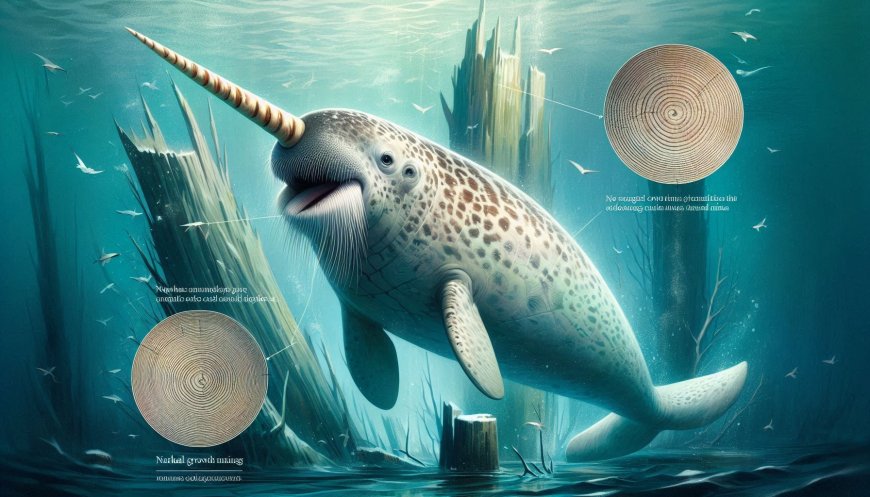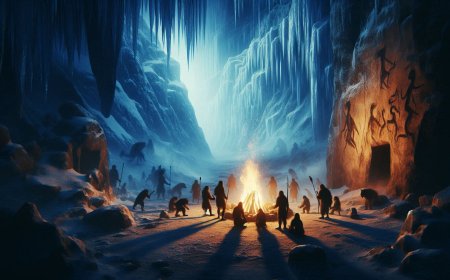Narwhal Tusks: Nature’s Spiral Time Capsules
Discover the fascinating secrets of narwhal tusks—spiraled teeth that record diet, age, and environmental changes like tree rings. Explore how these Arctic whales help scientists study climate change and marine ecosystems.

Hidden beneath the icy waters of the Arctic swims a creature so mythical in appearance that it has earned the nickname “unicorn of the sea.” The narwhal (Monodon monoceros), with its long, spiral tusk protruding from its head, has fascinated explorers, scientists, and storytellers alike for centuries. While the tusk has often been shrouded in legend, recent scientific discoveries have revealed that it is much more than just a whimsical spear—it’s a biological time capsule, recording decades of the narwhal’s life and environment in a manner similar to the rings of a tree.
What Is a Narwhal Tusk, Really?
Contrary to what one might expect, the narwhal’s tusk is not a horn, but an elongated canine tooth. Almost exclusively found in males (although a few females have been recorded with smaller tusks), this tooth can grow up to 10 feet long and spirals in a left-handed helix. It erupts straight through the narwhal’s upper lip and projects forward like a lance. For years, its function puzzled scientists. Was it a weapon? A sensory organ? A mating display?
Research now shows that the tusk is highly sensitive, packed with millions of nerve endings, and may serve as a tool for sensing the environment. It can detect changes in salinity and possibly pressure, giving the narwhal a better understanding of the icy Arctic waters it calls home.
But its most intriguing feature lies in its structure: growth rings.
Growth Rings: Tree Rings of the Sea
Much like trees, narwhal tusks grow in layers. Each year, a new layer of dentin (a dense, bony tissue) is deposited, forming a ring. These rings remain visible in cross-section and offer a chronological record of the narwhal’s life. Scientists have learned to read these rings to uncover an astonishing amount of detail—not just the narwhal’s age, but also a timeline of its diet, health, and the environmental conditions it experienced.
The process involves taking thin slices or core samples from naturally shed tusks or those obtained through Indigenous subsistence hunting. Chemical analysis of the rings—particularly stable isotope ratios of elements like carbon and nitrogen—can indicate what types of prey the narwhal consumed in a given year. For instance, higher nitrogen levels might suggest a diet rich in fish, while lower levels could indicate a focus on squid or other cephalopods.
Environmental Time Machines
Beyond diet, narwhal tusk rings also capture broader environmental changes. Shifts in isotopic signatures can reflect changes in sea ice cover, water temperature, and even levels of industrial pollutants like mercury and lead. This makes narwhals not just fascinating in their own right, but valuable sentinels of climate change.
A groundbreaking study in 2018 analyzed tusks from narwhals collected over a 50-year span. It found a marked increase in mercury levels starting in the mid-20th century, a clear reflection of industrial pollution in the Arctic food chain. Simultaneously, changes in diet suggested that narwhals were increasingly relying on open-ocean fish rather than their usual ice-associated prey, likely due to declining sea ice.
This unique biological record-keeping has given scientists an unprecedented window into how marine ecosystems are shifting—insights that are difficult to obtain through traditional means, especially in the remote and often inaccessible Arctic regions.
Cultural and Conservation Implications
For Indigenous Arctic communities, narwhals are more than scientific curiosities. They are a vital source of food, tools, and cultural heritage. The tusk itself is often carved into art or used in traditional ceremonies. These communities have long understood narwhals’ seasonal movements and behaviors, and their knowledge continues to be invaluable to researchers.
Yet, narwhals are increasingly vulnerable. Climate change, increased shipping traffic, and noise pollution in the Arctic threaten their habitat and well-being. By studying tusk rings, scientists can not only understand how narwhals are coping with these changes but also use the data to advocate for conservation strategies.
Conclusion: The Story Told by a Tooth
Narwhal tusks are much more than biological oddities—they are living records, spiraling outward with stories of diet, migration, climate, and survival. Like the rings of an ancient tree, they silently preserve a history of the Arctic, year by year, swirl by swirl. In an age where the impacts of environmental change are accelerating, these icy unicorns may prove to be among our most insightful historians—if we learn to read their stories in time.
What's Your Reaction?







































































































